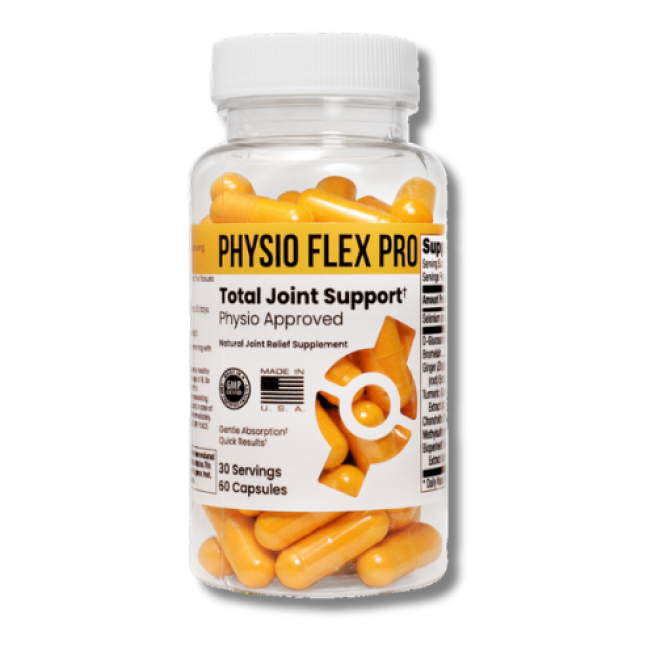If you're an athlete, you may encounter a time wherein you experience joint stiffness. Whether you like it or not, you must prepare yourself with your limited movements in the sports you're good at. But that's not all; even daily activities like bending, walking, and cooking are affected. Your joint will amount to swelling, pain, and discomfort, which also applies when aging.
Now you're probably wondering if there's a remedy behind joint stiffness. Joint lubrication might be the savior of the day! It plays a vital role in mobility and pain relief. Joint lubrication or synovial fluid is a natural substance that acts as a shock absorber to reduce the friction between your bones, allowing joints to function smoothly. Repeated movement could result in joint degeneration and cartilage damage without proper lubrication, contributing to conditions like osteoarthritis.This article seeks to provide detailed information on ways to lubricate your stiff joints to help you get back on track to become a more active person or a hardworking athlete.
Understanding Joint Stiffness

What Causes Joint Stiffness?
Aging and wear and tear
A study published in the National Library of Medicine shows that healthcare practitioners and patients view wear and tear as often held to be a factor of aging caused by osteoarthritis. Moreover, this can trigger a low-inflammatory response in your joint, releasing enzymes that break down cartilage.Arthritis and other inflammatory conditions
Inflammatory conditions are common culprits of joint stiffness. Rheumatoid Arthritis unintentionally attacks the synovium, leading to swelling, inflammation, and pain in your affected joints. Gout is another type of Arthritis in which the accumulation of uric acid crystals in the joints is triggered.Injuries or trauma
This can result from damage in tendons, ligaments, bones, and cartilage as joint structures. What can contribute to the stiffness in the affected joint is your body's natural response to inflammation, injury, and its healing process.Lack of movement or a sedentary lifestyle
It may be difficult for you to get out of bed or to do basic tasks like running, lifting objects, and cooking due to muscle weakness.The Role of Synovial Fluid
As a slightly yellowish fluid that's clear and viscous, the synovial fluid is a shock absorber responsible for joint lubrication, nutrient supply, and waste removal.This functions through several mechanisms, like forming a boundary lubricating layer to prevent direct contact between the opposing joint surfaces. It has viscoelastic properties that deform under pressure and, once the pressure is released, returns to its original state.
Methods to Lubricate Stiff Joints
Medical Interventions

- Hyaluronic acid injections: This type of injection is often used for individuals with osteoarthritis to improve mobility and alleviate joint stiffness. It has anti-inflammatory properties, which can help joint inflammation and pain associated with osteoarthritis.
- NSAIDs: As over-the-counter products, they're a class of medications as a medical intervention for joint stiffness, specifically for Arthritis and other inflammation-related conditions. They're effective in terms of reducing stiffness, inflammation, and pain in the affected joints.
- Physical therapy: This therapy involves manual techniques, education, and therapeutic exercises to help patients to prevent further stiffness.
Natural Remedies
- Omega-3 fatty acids (Fish oil, flaxseed oil): These two dietary sources are common natural remedies for joint stiffness. Derived from fatty fish like sardines, mackerel, and trout, fish oil can reduce joint inflammation. At the same time, flaxseeds are a well-selected choice for vegetarians who prefer omega-3 plant-based sources. We have written an in-depth comparison of algae oil vs fish oil as omega 3 sources.
- Turmeric and ginger: With the help of an active compound named curcumin, turmeric is composed of antioxidant properties to help alleviate discomfort. On the other hand, ginger's main bioactive compound, gingerol, has anti-inflammatory effects and may improve circulation.
- Green tea extracts: These provide an antioxidant effect due to the richness of polyphenols, specifically catechins. These compounds reduce inflammation and oxidative stress to neutralize harmful free radicals in the body.
- Glucosamine and chondroitin supplements: Found in the cartilage of your body, glucosamine plays a vital role in cartilage and other joint tissue repairment and formation. The same goes for chondroitin as a component of cartilage, which can delay cartilage degradation for osteoarthritis-related conditions.
Supplements That Combine These Ingredients
Physio Flex Pro

The combination of these ingredients has potential benefits in terms of promoting joint function. Some studies show that combining some of these ingredients effectively alleviates joint pain:
- A 2008 report published in the American Family Physician revealed two clinical trials have a specific combination product evaluation consisting of manganese, glucosamine, and chondroitin. This combination lessens knee pain for patients with osteoarthritis.
Exercises for Joint Lubrication

Range of motion exercises
These exercises would maintain and improve the mobility and flexibility of your joints. Easy exercises like neck rotations, shoulder circles, and arm swings can be done at home.Low-impact aerobic activities
Cycling and swimming are examples of low-impact aerobic activities. Cycling on a regular or stationary bike is a great way to engage in cardiovascular exercise. Swimming can provide resistance to the buoyancy of water without stressing the joints.Strength training
Before going for this exercise, keep in mind to approach the training carefully, especially if you have joint stiffness. Proper strength training can improve muscle strength and joint stability for better joint function.Flexibility and stretching exercises
This may be one of the simplest ways to start your joint lubrication journey since you can do this at home. Some exercises to consider in your routine are neck stretch, shoulder stretch, chest opener, trunk rotation, and hip flexor stretch.Dietary Recommendations

Foods rich in antioxidants
Incorporating foods with antioxidants in your diet can fight inflammation and support joint health. Leafy greens are always a great way to start making salads, along with berries that can turn into your favorite breakfast smoothie. Other foods such as tomatoes, dark chocolate, and nuts are good options.Adequate hydration
Of course, drinking more than 8 glasses of water daily is crucial to reduce the impact of joint stiffness. You can maintain the viscosity of a synovial fluid through proper hydration. This also transports nutrients to your joint tissues.Foods high in omega-3 fatty acids
In terms of omega-3 fatty acids, it's already essential to start including foods such as salmon, walnuts, and seafood like shrimp or crab in your diet.Avoiding inflammatory foods
Refrain from selecting foods with added sugars, like fruit juices and boxed cereals. Avoid refined carbohydrates like white rice and white bread if possible. You may also need to refrain from buying processed meat like sausages or hotdogs.Special Focus: Lubricating Stiff Knee Joints
Why Knee Joints are Prone to Stiffness
Knee joints encounter several issues that would commonly affect their structures. Osteoarthritis happens when the protective cartilage wears down over time. This structure cushions the ends of bones, and wearing them down can cause swelling, pain, clicking and stiffness around the joint.
Sprains that you experience from sports are often caused by ligaments or tendons around the knee that can be stretched or torn. You can feel limited knee movement along with swelling and pain if you have meniscus tears. Due to pivoting movements or sudden twisting, menisci are usually susceptible to tears.
Specific Exercises for Knee Lubrication
- Quadriceps Strengthening: Strong quadriceps muscles can improve joint mechanics, rescue the risk of injuries, and help joint stabilization. Some quadriceps strengthening exercises that you can take are leg extensions, squats, and wall sits.
- Hamstring stretches: To keep the muscles flexible and mobile, consider taking hamstring stretches. These exercises can be done when lying down using a wall, strap, or table and when sitting.
- Calf stretches: This exercise can promote joint lubrication in the knee joints and ankle. Some effective calf sketches are wall lean calf sketches and standing calf sketches.
Tips for Maintaining Joint Health
Importance of regular movement and exercise
According to Harvard Health Publishing, exercise is usually prescribed for patients that have Arthritis. Having good technique (and good shoes, too) in your stretching exercises will reduce the risk of musculoskeletal injuries.Benefits of maintaining a healthy weight
Maintaining a healthy weight plays a crucial role in joint health due to less inflammation, better blood sugar control, and improved joint function. According to the Centers for Disease Control and Prevention, weight loss can minimize arthritis pain, especially if obese or overweight.Importance of a balanced diet
Maintaining a balanced diet is necessary to improve joint health for healthy bones, antioxidant protection, and mineral support. A study published by the National Institute of Arthritis and Musculoskeletal and Skin Diseases shows that a balanced diet puts emphasis on whole grains, low-fat or fat-free dairy products, fruits, and vegetables.Staying hydrated
Drinking water contributes to the overall well-being of your joints through nutrient transport, synovial fluid maintenance, and joint comfort. According to the Illinois Bone and Joint Institute, this fluid decreases joint friction.FAQ Section
Q1: Can diet alone help in lubricating stiff joints?A: In chronic conditions or advanced joint degeneration cases, diet alone isn't sufficient to treat stiff joints. However, a balanced diet still has its place in contributing to overall joint health since it's rich in certain nutrients.
Q2: Are there any side effects of joint injections?
A: Yes, in fact, some of the potential side effects you may encounter are joint damage and a weakened immune system for corticosteroid injections, while temporary pain and allergic reactions for taking hyaluronic acid injections.
Q3: How often should I exercise to keep my joints lubricated?
A: While regular exercise is essential for overall joint health, the frequency can vary depending on your existing joint conditions, individual needs, and fitness level.
Q4: Are there any natural oils or creams that can help with joint lubrication?
A: Topical applications like eucalyptus oil, capsaicin creams, and arnica gel can provide temporary relief, but they don't lubricate the joints from within.
Q5: How can I lubricate my joints naturally?
A: Natural methods include consuming foods rich in omega-3 fatty acids, staying hydrated, regular exercise, and taking certain supplements like glucosamine.
Conclusion
Joint lubrication will always be significant in unlocking the secrets to pain-free movement. As a shock absorber, joint lubrication allows your joints to function freely and reduces friction.
Implementing joint lubrication can start with medical recommendations such as physical therapy and hyaluronic acid injections.
Natural remedies such as green tea extract, turmeric, and ginger are incorporated into one supplement like the Physio Flex Pro supplement, which can be pretty life-changing for active people and athletes who want to lubricate their joints. Even a variety of exercises and dietary recommendations are essential for the overall well-being of your joints.
Therefore, even if you aren't encountering joint stiffness yet, it's important to take care of your joint by taking proactive steps. Prioritizing joint health will allow you to invest in your future, especially if you want to stay physically fit while taking your studies or when you want to excel in your sports career.
Remember that taking proactive steps to joint health will allow you to take control of your own well-being. And in improving your joint health, you'll also take care of your emotional and mental well-being.







